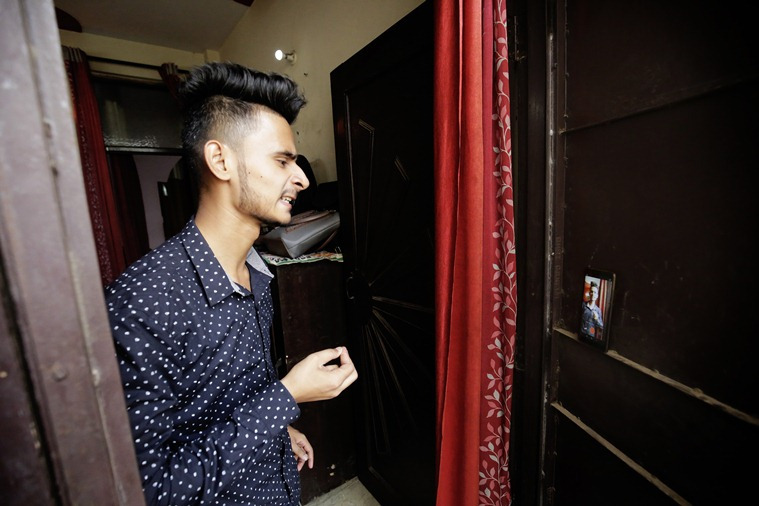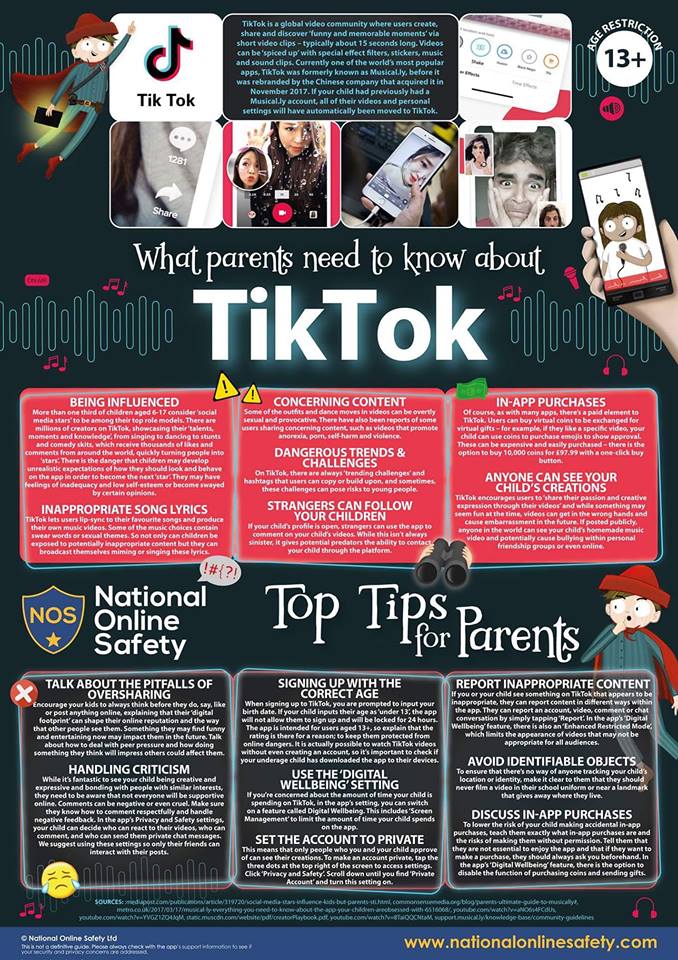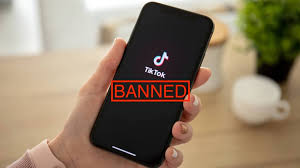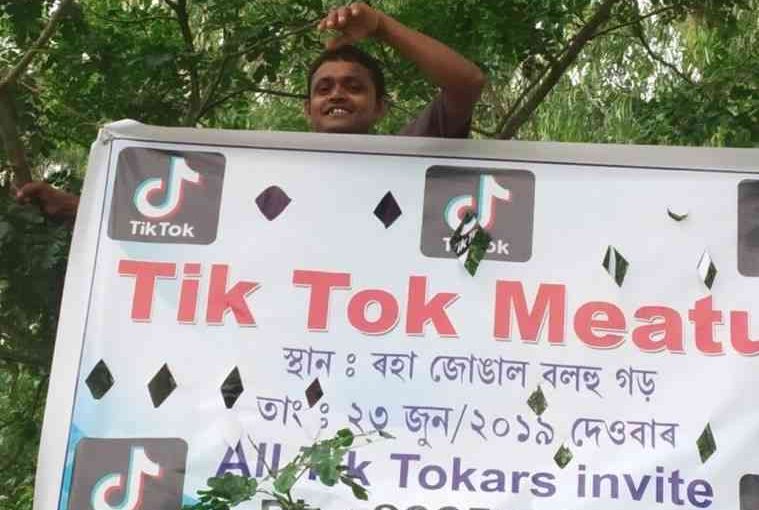RURAL TALENT: A young man even organized a Tik Tok meet though he asked the person who created the sign board to spell it as Tik Tok ‘meat’ up
Tik Tok which is a Chinese app has become an obsession even with young people in remote villages in India. Tik Tok involves uploading 15 sec videos on any subject. It is become the greatest source of fame if not fortune which could come from your popularity as a performer on Tik Tok. The Tik Tok app has reportedly over 20 million subscribers in the country… Tora Agarwala, Surbhi Gupta and Karishma Mehrotra investigate its rise
Kaam nai niki? Do you have no other work?” At a banner printing shop in Nagaon, a town in Assam, the middle-aged shopkeeper was bemused. It was the strangest order he had received in a while.
For one, the banner was for a “TikTok” meetup. He had not the slightest inkling of what that was. Second, the two boys who had introduced themselves as hailing from Jamuguri and Raha, smaller towns in the state, insisted that the text incorporate a spelling mistake.
“Instead of M-E-E-T up, please write M-E-A-T up,” he was told. The shopkeeper grudgingly obliged and the boys rode off on their bikes. It would be ready the next day.
“This is going to go viral,” Dhurbajit Medhi said triumphantly to his friend PK Nath. They had only known each other for a month, having “met” on TikTok. In April, they sat face-to-face for the first time at a small restaurant in Raha, in Nagaon district, where Medhi lived. Nath had travelled 110 km to meet him.
Medhi was 23, a singer who had dropped out of college because of a death in the family. Nath, about 30, was known in his neighbourhood in Jamuguri for two things: his gela maal dukaan (grocery store) and his penchant to make people laugh.
On TikTok, both have followers in thousands. Over a few months, they would chat often, appreciating each other’s videos. “On a sad day, I would scroll through Nath da’s feed and it would make me laugh without fail,” says Medhi, who joined TikTok about a year ago. Many comments on his videos are from girls. “Some say ‘cute’ and some say bhaal laagise (You’re looking good),” says Medhi, who is reasonably tall and sports a goatee on his boyish face.

Over the year, Medhi has learnt the tricks of the TikTok trade. “There are two kinds of videos which get attention here in Assam: either you do sad, romantic songs. Or you do fotuami — slapstick humour,” says Medhi, who has made a niche for himself in the former category. He owns an Mi phone, worth `11,000, which he bought a year ago by saving money through his work at his father’s tea shop. “My mother is okay with me making these videos. But she says, ‘Do all this, but think about your life also.’ I get her point but maybe I can make a career out of this,” he says.
After all, TikTok is not as easy as Facebook. It involves an element of skill. “Do you know how difficult it is to get one TikTok like? On Facebook, you just put a photo and the likes pour in. Here, we have to work hard.” Medhi admits he was naïve initially. “I would make photo-collages from my trips to Kaziranga and add some background music.” But that would not have worked. “The viewer takes into account everything: is our lip-sync matching? Are our clothes suited to the mood of the music? Are our expressions accurate?”
Today, Medhi has over 400 videos, many of which feature him mouthing lyrics to the songs sung by Assamese musician Zubeen Garg. Sometimes, he sings in his own voice too — a secret talent he has nurtured but not had the opportunity to explore. “In Upper Assam, there is an appreciation for the arts and music. But here in middle Assam, it is different. People would mock, ‘Eeeh gayok hobo ahise. Look at him trying to be a singer,’” says Medhi.

PHENOMENAL GROWTH
It is these aspirations, which often get mowed down by the traditionalism that comes with living in small towns and villages that TikTok is giving oxygen to. The short-form video app has seen a phenomenal growth since its rebranding from Musical.ly in 2018, garnering 200 million users in India alone. Its hallmark is simple: it woos your attention with 15-second videos (they make go up to 60 seconds too) of lip-syncing teenage girls, dancing boys, family pranks and other such stylised moments. The mobile app’s owner, a Chinese internet company called ByteDance, was reportedly awarded a round of major investment from Japanese SoftBank last year, making it the world’s most valuable startup.
TikTok’s rapid capture of India — it skyrocketed past traditional social media mammoths, like Facebook, on global download charts in 2018 — is a testament to how quickly Chinese apps have begun to give American tech companies a run for their money in one of the world’s most important markets. TikTok has given a megaphone to rural Indian life in a way that no other app has been able to; American apps such as Facebook have been restricted to a primarily upper-class user base.
“We believe that TikTok filled the gap by bringing people from across the deepest pockets of India online and giving them a platform to express themselves,” said ByteDance’s global public policy director Helena Lersch. Since the company introduced in-feed advertisements and branded editing tools last year, it’s attracted the likes of Pepsi, Myntra, and Dunzo.
If more proof were needed that TikTok has planted itself into the circuitry of desire and aspiration, it came by way of a news report last fortnight. A young man in Delhi, who worked at a restaurant, was arrested for snatching an iPhone XSMax — he wanted to shoot good-quality TikTok videos. Another 19-year-old from Delhi, Salman Zakir, was shot by his neighbour allegedly in the course of making a TikTok video.
WHAT IS TIKTOK?
But what is the big deal about TikTok? How have 15-second fragments of people being people colonised the attention of so many? Scrolling through the app for the first time, one is struck by how random it is, and how the attention economy has shrunk your mindspan to a quarter of a minute. You could easily tire of teens dancing, making faces and lip-synching in super-tiny skits and video memes. Or, you could watch an entire generation occupy this playground with their energy and creativity, using 15 seconds to mix, mash and play versions of themselves. Preparing a face to meet other excited, silly faces has never been so addictive.
Social media has put the self at the centre, making opinions out of rants, photographers of anyone with a phone camera, and journalists of citizens. TikTok takes the humdrum, turns it into a form of talent and injects into it the velocity of the fast-travelling video.
But, more importantly perhaps, it taps into a confidence in the young — about their lives, abilities and even their humble backgrounds — that was unthinkable a generation ago.
For sure, TikTok could not have spread this way five years ago either. Eighteen-year-old Devanshu Mahajan, an undergraduate student of commerce at Delhi University’s School of Open Learning, agrees. He found himself exploring the internet only after the entry of Reliance Jio in the telecom market. “Before that we used to have 1 GB data for a month. Suddenly, we had 1 GB to spend in a day,” says the Delhi resident. Last year, he started posting videos on TikTok, most of which seemed to disappear into nowhere. “I got so angry that I uploaded a rant about the lack of response, and suddenly it got viral. Then, I started giving my own twist to trending sounds/beats and songs, and these videos started becoming popular,” says Mahajan, who has over eight lakh followers now.
Most of his popular posts are about Indian families (“Indian parents wish for boys only to send them to the market to buy milk and vegetables endless times”), school life and being single. They are not particularly witty, but belong to the tradition of native humour that once would make judges mysteriously ROFL on shows like The Great Indian Laughter Challenge. “I make my videos at home, I have no tripod or light, there is one window where I put my phone and act,” says Mahajan, who uses an Mi Y3 phone. With a spiky haircut and a lean frame, he is the picture of ordinariness. “People either say I’m too thin, or comment about my nose or looks. But I make a story out of those comments too. If I can make fun of myself, nothing can affect me,” he says.

“It may not be like YouTube where one can earn money, but because of this app, I feel like a star now,” says Musaib Bashir Bhat, 27. He joined TikTok seven months ago and his 300 videos in Kashmiri have earned him 73,000 followers already. He is also recognised on the streets of Srinagar.
Fame is the drug that drives TikTok users, but, for now, at least, this is a following rooted in the local. The app is a Babel of many tongues, and each region has its distinct self-expression — in its aesthetic, looks or music. It hasn’t been monopolised by Hindi film music or Punjabi pop.
Ranjan Barman, an 18-year-old living in a small village in Lakhimpur, Assam, loves acting. “I know I can’t be an actor in real life— but at least on TikTok I can,” says the college-goer who joined the app four months ago. He is now nearing his one millionth heart — a commendable feat for someone who is new to the TikTok universe. His popularity, he suspects, could have something to do with the props he uses in his videos. Barman owns 22 gamusa shirts, or shirts fashioned out of the traditional Assamese cloth, and says that whenever he wears them, his videos get more play. “In Assam, people respect the gamusa. It touches sentiments,” he says.
But how substantial is this fame? What kind of recognition do TikTokers seek? Last month, Mahajan called for a meet-and-greet with his “fans” at a west Delhi mall. Thirty people showed up. “I hadn’t expected anyone to turn up. People clicked photos and videos, but I didn’t feel like a celebrity,” he says.
While TikTok fame comes from the number of followers one has, an important barometer is also the number of hearts you receive. For example, Medhi has only 4,000 followers, but his videos have received 74,500 hearts. The heart tally is an aggregate of the number of likes the creator has garnered across every video he has uploaded. “It is just one viral video you need — and then you are set,” says Medhi, who hasn’t hit the jackpot yet, but is optimistic. “Like all things in life, this, too, takes time,” he says.
TikTok has given Aizawl’s Adeline Pach much more than the 5,12,000 followers one sees on her profile. A cancer-survivor, Pach started using it in 2015, when it went by the name Musical.ly, while recovering from her illness. “It was silly, goofy stuff — but it helped take my mind off things,” she says. Even today, she suffers from a number of health issues. But TikTok “distracts her”.
Pach’s skilful “transition” videos (where one frame would blend to another seamlessly), started getting featured on the app’s homepage. “People liked the way I edited my videos. For example, if I was saying and wearing something in one frame, the next would be in another location, with me doing something else in another outfit,” says Pach, adding that earlier TikTok was more about skill, and now people “blindly heart goofy content.”
As Pach, now in her late twenties, kept getting featured, her followers shot up — and for first time in her life, the introvert found herself interacting with people — “and enjoying it. It gave me the confidence I never had.”
In 2017, Pach attended her first TikTok meetup in Mumbai. “That had about 70 people but the next one which took place in Bengaluru had 600,” she says. She performed a rap song by Nicki Minaj in front of a packed auditorium. “Suddenly I was fearless.”

For many, TikTok holds out the hope of bigger things to come — a career in music and acting. When he was a teen, Ambish KB’s acting talents — he mimicked his teachers’ mannerisms and got them to laugh — made him almost famous in school. In college, his obsession with films would make him watch first-day, first-show releases of leading Malayalam superstars like Mammootty and Mohanlal. He also held positions in the Ernakulam district unit of the all-Kerala Mammootty fans association. “It’s safe to assume that I spent more time in theatres than in college,” says Ambish, 27, an accountant with a fashion design firm in Kochi.
He still has not given up on his acting dreams. For three years now, he has been scouring for small roles, approaching directors, producers and scriptwriters, even as he maintains a job on the side. Not surprisingly, he has taken to TikTok like a duck to water. His account doesn’t boast an envious number of followers (572 at last count) but his videos, most of which are comedy re-enactments of popular scenes from Malayalam cinema, have collected thousands of views and a flood of reactions. He says his videos are all home-produced and mostly filmed in the dead of night once his parents are fast asleep. Many of them are also collaborations with his wife; she’s not mad about cinema like he is, but she likes the fun interface of TikTok. To the point that, at weddings, their relatives call them, “Oh look, here come the TikTok people!”
But more than anything, Ambish believes TikTok could hold his ticket to the film industry. “It’s a medium for people like us to display our talent. Who knows, if my video goes viral and if a casting director happens to notice, I might click,” says Ambish, who spends at least eight hours a day on TikTok. His inspiration is a fellow TikTok user, Fukru, who supposedly landed a role in a film after his dance videos went viral. “He would post videos every day, just random ones of him dancing. Now he’s got a role in the next film by director Omar Lulu. You never know,” Ambish says.
Ambish is not prepared to leave his job yet, as he understands the film industry is unpredictable. He doesn’t have the means to travel for auditions to faraway towns. But he knows he has a powerful device at his disposal that could get him there: his Huawei P20 Lite smartphone and the TikTok app on it.
PRIVACY CONCERNS
While future sociologists might mine TikTok to understand the changing mores of a new generation, fears of data mining and privacy intrusions of the app have often been voiced. This year, the US Federal Trade Commission fined the company $5.7 million for illegally collecting the personal data of children. In 2018, Indonesia’s government temporarily banned the platform for “negative”, mostly pornographic and blasphemous, content. The government lifted the ban after the company complied with local laws and stepped up local content moderation.
In April, the Madras High Court made a similar interim takedown order, asking Google and Apple to remove TikTok from their app stores, citing pornographic and child exploitation content. Three weeks later, the court lifted the ban after the Supreme Court asked it to address the company’s plea against the takedown, and the app fell from most downloaded to fourth most in India. The company has admittedly decided to “show less skin” here than its other markets. “It’s a bit of a case-to-case basis. There is no clear line I can share with you now. If there is a sexually-explicit video, we take it down. And we are doing this a bit quicker in India,” said Lersch.
Writing in these pages, our columnist Nishant Shah warned about TikTok’s “embrace of artificial intelligence and big data analytics.” “From the minute you sign up for it, giving up your personal information and data to extreme mining which bears the same pitfalls of privacy and surveillance that all other big data apps do, TikTok starts presenting content to you. This is not content created by friends, or colleagues… Instead, this is content created by people you don’t know at all, and brought to you by algorithms that know, even without you telling them what you might like.
The more time you spend… going through complex tutorials to make your own 15-second fun video, the more the machine learning algorithms learn you,” wrote the co-founder of the Centre for Internet and Society. While critics point out that the infantilised world that the app peddles is dangerous to the very personal liberty that it seems to showcase, it’s not an argument that is winning.
But wait, what happened to the “meatup” banner? When Medhi and Nath had met, they rued the little regard their family and friends had for their pursuit. “My friends think I am wasting time,” says Medhi, the only TikToker in Raha. Both knew they had to do something.
They went ahead and organised the first state-wide TikTok meetup in Assam, slated for this Sunday. While there have been meetups before, this is the first time TikTokers from every corner of the state will be in attendance. They expect about 500. How did they manage to do it? “Only negative things go viral on the internet,” says Medhi, “That is why we decided to spell ‘meetup’ as ‘meatup’.”
The day the banner was ready and picked up from Nagaon, both Medhi and Nath took a picture of it and put it on the app. As expected, there was an uproar. “Everyone started sharing it. My phone number was on the banner and I would get 10 calls a day. “They would say: Don’t you know how to spell ‘meetup’? Most made fun of me but I didn’t care. Our job was done. The word had spread.”
Courtesy: Indian Express
